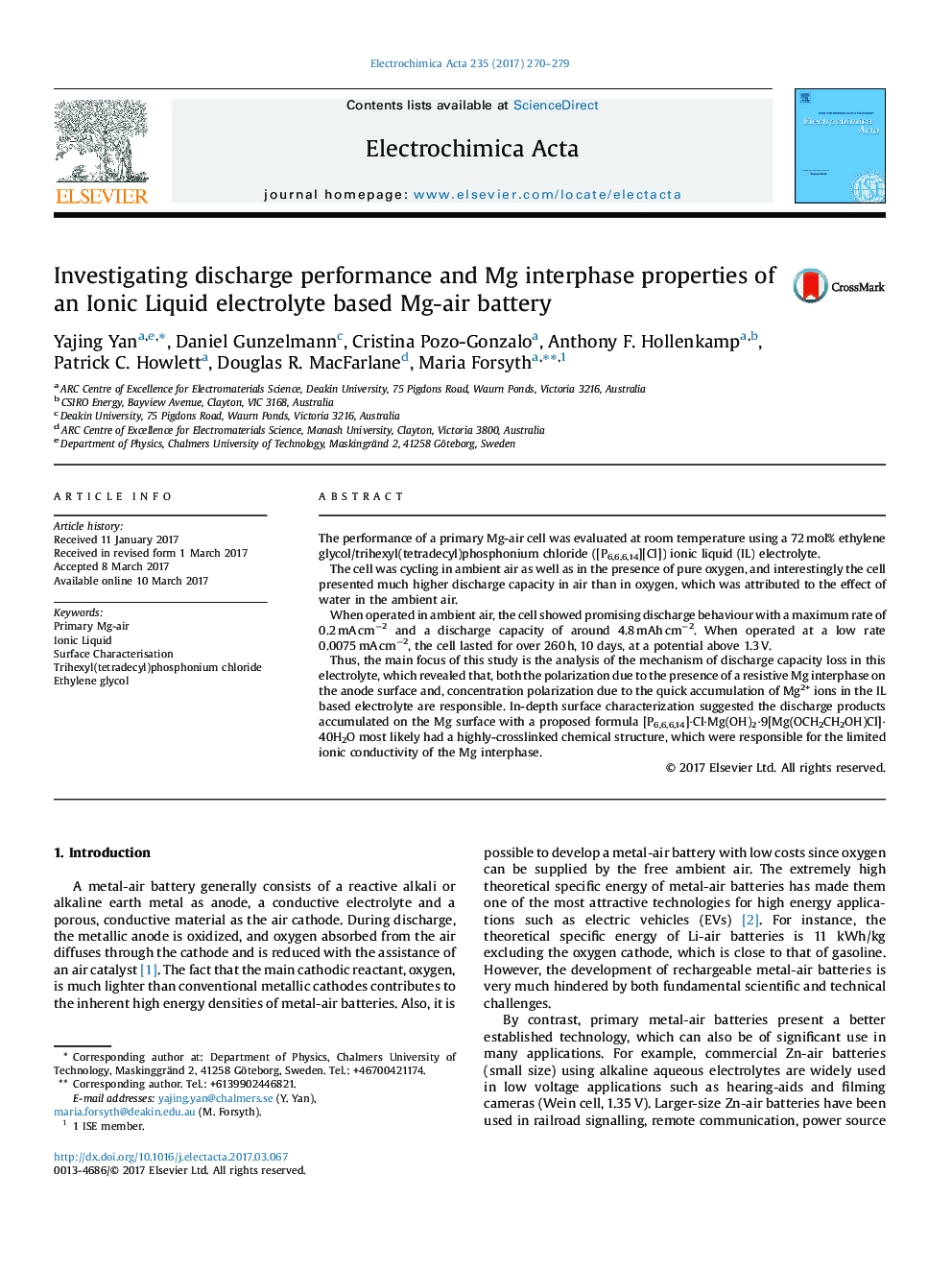| کد مقاله | کد نشریه | سال انتشار | مقاله انگلیسی | نسخه تمام متن |
|---|---|---|---|---|
| 6471577 | 1424122 | 2017 | 10 صفحه PDF | دانلود رایگان |

The performance of a primary Mg-air cell was evaluated at room temperature using a 72 mol% ethylene glycol/trihexyl(tetradecyl)phosphonium chloride ([P6,6,6,14][Cl]) ionic liquid (IL) electrolyte.The cell was cycling in ambient air as well as in the presence of pure oxygen, and interestingly the cell presented much higher discharge capacity in air than in oxygen, which was attributed to the effect of water in the ambient air.When operated in ambient air, the cell showed promising discharge behaviour with a maximum rate of 0.2 mA cmâ2 and a discharge capacity of around 4.8 mAh cmâ2. When operated at a low rate 0.0075 mA cmâ2, the cell lasted for over 260 h, 10 days, at a potential above 1.3 V.Thus, the main focus of this study is the analysis of the mechanism of discharge capacity loss in this electrolyte, which revealed that, both the polarization due to the presence of a resistive Mg interphase on the anode surface and, concentration polarization due to the quick accumulation of Mg2+ ions in the IL based electrolyte are responsible. In-depth surface characterization suggested the discharge products accumulated on the Mg surface with a proposed formula [P6,6,6,14]·Cl·Mg(OH)2·9[Mg(OCH2CH2OH)Cl]·40H2O most likely had a highly-crosslinked chemical structure, which were responsible for the limited ionic conductivity of the Mg interphase.
93
Journal: Electrochimica Acta - Volume 235, 1 May 2017, Pages 270-279